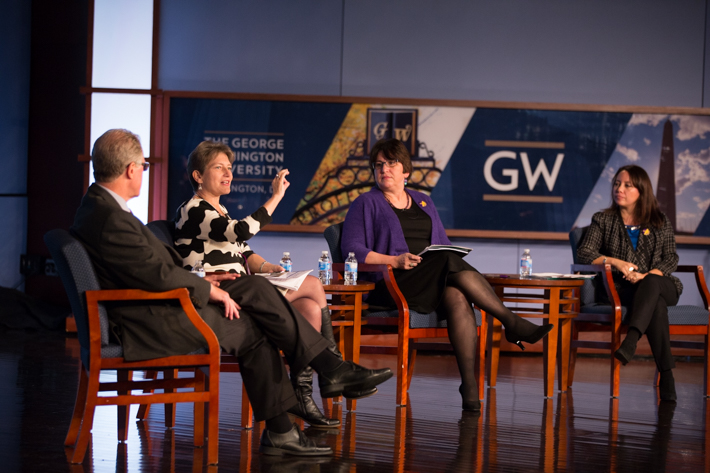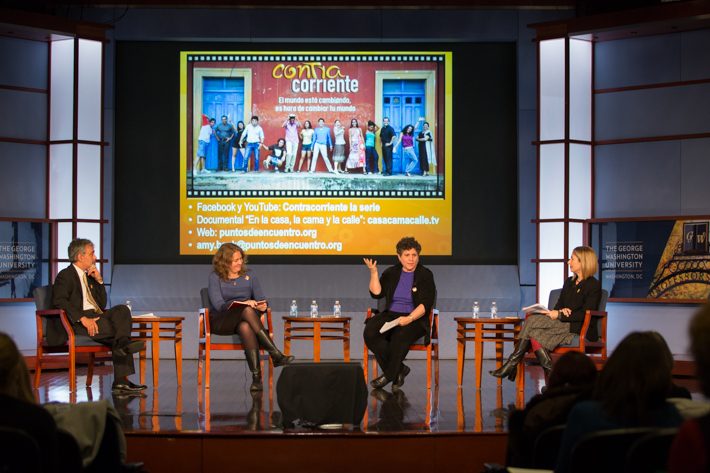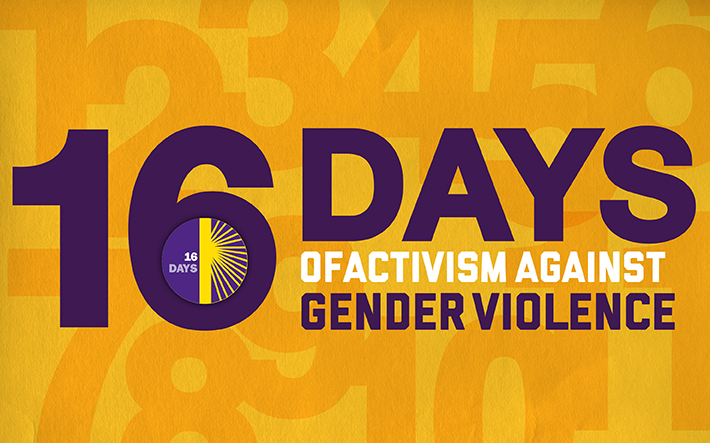When she was a medical student, Dean Lynn R. Goldman heard screams coming from the house next door. She ran over to witness a man beating a woman with a cast iron skillet as two young boys watched the assault.
“She had very serious injuries. She was devastated. She did not wish for me to call the police,” said Dr. Goldman, the Michael and Lori Milken dean of public health, at the George Washington University on Wednesday.
Dr. Goldman took the woman to a battered women’s shelter where a lawyer obtained a temporary restraining order for her. She will never forget the sound of the stranger’s wail.
“I never stopped wondering about the impacts, not only on her health, but also possibly the health of the young boys who were observing this as a model of male behavior,” Dr. Goldman said to an audience in Jack Morton Auditorium.
The statistics show it’s all too common: One in three women will be raped, beaten or otherwise abused in their lifetime, according to the World Health Organization. More than 35 percent of women have experienced rape or physical violence in the United States alone.
But in order to counter this global health epidemic, there needs to be a greater investment in prevention programming and research, say authors in a new series of papers recently published in the Lancet, the world’s leading medical journal.
Among those papers is a study from researchers at GW’s Global Women’s Institute (GWI). Their paper examines evidence for interventions intended to reduce the prevalence of violence against women and girls. The institute hosted an event—a part of the “16 Days of Activism Against Gender Violence” global campaign—to celebrate the launch of the Lancet issue and to highlight the researchers’ findings.
The GW researchers’ study, led by GWI Director Mary Ellsberg, concludes that evidence on “what works” to prevent violence against women is incomplete. The team reviewed more than 100 evaluations of interventions in order to identify effective strategies and to find gaps in the available research.
They found that evidence for interventions is highly skewed toward high-income countries, mostly the United States and Canada, which account for just 6 percent of the world’s population. Their findings also show that very few studies, particularly in high-income countries, evaluated prevention programs and instead focused on response.

James M. Tielsch, chair of the Department of Global Health; Lori Heise, Gender Violence and Health Centre director; Mary Ellsberg, Global Women's Institute director; Diana J. Arango, Global Women's Institute research scientist
While there were obvious shortcomings in the evidence base, the researchers did identify 27 interventions from around the world that successfully reduced different forms of violence against women.
In particular, multi-pronged programs that engaged multiple stakeholders in the community—like police officers, health care workers and teachers—seemed to be most effective.
One of the most successful interventions was a community-based program in Uganda called SASA!, which reduced domestic violence by nearly half over two years. Lori Michau, the director of the Uganda-based nonprofit organization Raising Voices, who implemented the study, spoke at a second panel on Wednesday about the challenges and lessons learned from trying to affect social change on the ground.
The Healthy Relationships program, now used in 5,000 schools in Canada, involves teaching male and female students about safe relationships and resulted in decreased physical dating violence.
“We did find that the effective ones are really a new kind of programming. They are sustained over time, they go on for several months or years, and they don’t just deal with one part of the targeted population,” Dr. Ellsberg said.
Effective programs also tended to look beyond the violent behavior and addressed the underlying drivers of violence, such as poverty, lack of education for women and inequitable social norms. For example, two programs, one in India and one in Ethiopia, used a set of activities to keep girls in school and to delay marriage, like life skills training, community service projects and mentors. The programs succeeded in delaying marriage for young girls, the researchers say in their study.
“We found that thrilling, not only that this type of work is being done around the world, but now that we also have measurable results to show that violence can be prevented,” Dr. Ellsberg said.
Wednesday’s event also featured a “call to action” presentation from Lori Heise, the director of the Gender Violence and Health Centre at the London School of Hygiene and Tropical Medicine. Dr. Heise challenged national and global leaders to commit to five actions to prevent violence against women and girls, including investing in violence prevention programming, as well as to support research that would inform policies and monitor progress.
The researchers stressed that deeper qualitative research is essential to figure out not only whether certain programs and strategies are effective, but also why they are effective, in order to make these programs replicable in other communities.
“It’s going to take us a while to figure out what are the pieces of the interventions that are actually key,” Dr. Ellsberg said. “We couldn’t draw conclusions often about why one program was more successful than others.”
While Dr. Heise agreed that more evidence is needed, she said there also is a need for increased interest in “optimizing” programs rather than simply “evaluating” them. She suggested that researchers should spend time looking at programs while they are active, so that there is a learning phase before a program is ready to be evaluated.
“The point is that we haven’t experimented enough with programs, we haven’t been rigorous enough in documenting what the program is,” she said. “I think it’s important we don’t shut down innovation too soon.”

The second panel of the day focused on the challenges and lessons learned from trying to effect social change on the ground. (From left) Rajiv N. Rimal, chair of the Department of Prevention and Community Health; Lori Michau, co-founder of Raising Voices; Amy Banks, co-founder of Puntos de Encuentro; Alessandra Guedes, World Health Organization




